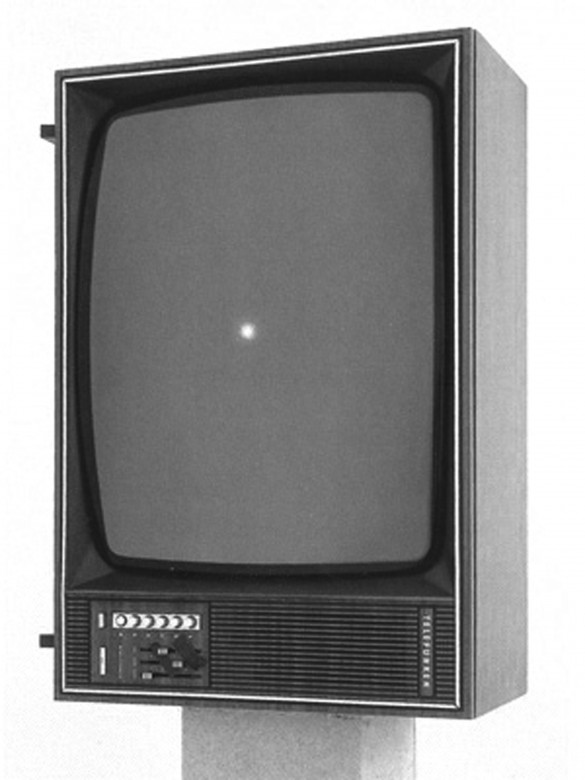
Information
Information
Point of Light is a result of Paik’s adaption of a television set by intervening in the signal at the point of input (Elwes, 2005). The work consists of a television set turned on its side and an output of a radio signal fed into it. The television set, then, interprets the radio signal as a single point of light that can be manipulated by turning up the volume of the radio: the point of light either expands or contracts. Point of Light explores the principle of interactivity in early electronic arts, and the potential for viewers’ participation, or co-creation, of the final work. Paik may have been inspired by Ben Laposky’s Oscillons (1950s), which was created by a distortion of sound waves with a deflector mounted to an oscilloscope. As in Zen for Film, Zen for TV, and Rembrandt Automatic, the visual content of Point of Light is reduced to a minimum, whereas the sculptural aspect of the television set acquires new meaning. Point of Light also exemplifies the myriad possibilities for manipulation of television monitors and the inclusion of chance and contingency in the creative process. —AG
Neue Nationalgalerie, Berlin. © Nam June Paik Estate.